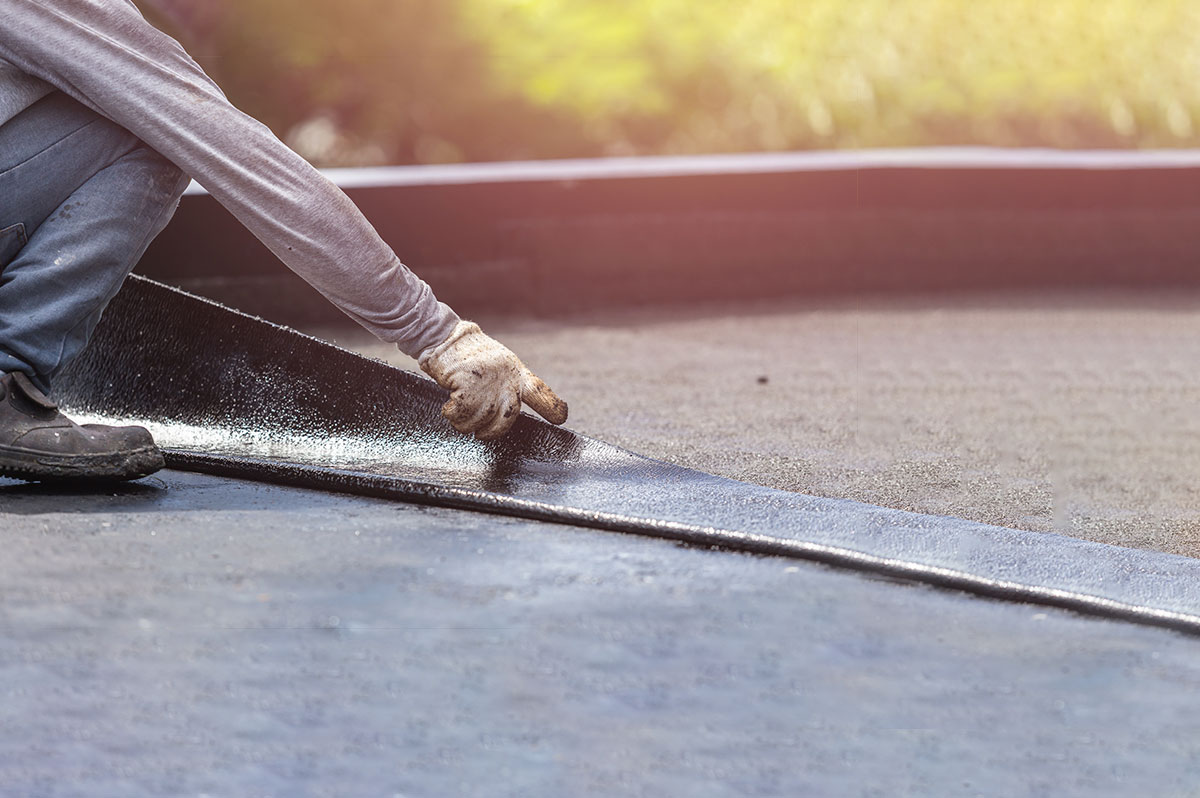Most roofs don’t last beyond their designed lifetime – but they absolutely can and should. Each year that you keep your rooftop operational is another year that you’ve amortized the cost of its original construction. In other words, there’s a financial incentive for you to stall your next roof replacement for as long as possible.
Your need for maintenance balances this incentive. An unmaintained roof will eventually hurt the rest of your building, and the cost to repair the damage will exceed any benefit from amortization. Your best bet is to invest in ongoing roof restoration, revitalizing your roof and perhaps even improving your roof’s efficiency beyond its original performance.
How Can You Tell When It’s Time for a Roof Restoration?
It’s not hard to tell when your roof needs a refresh. One large and obvious sign is any water damage that’s visible on the walls and ceiling of your building. Your entire building envelope should be watertight, which includes the roof. Leaks may be caused by holes in the roof membrane, defects in the roof edge, or by flashing peeling away from corners and penetrations.
Insulation failures can be a little bit harder to spot – until you look at your energy bill. If you find that it’s taking more energy or fuel to keep your building warm in the winter and cool in the summer, then you may be experiencing an insulation failure. In addition, your insulation setup might simply be out of date – refer to the newest version of the Building Energy Codes Program to understand whether your building’s R-value is no longer in line with the standard.
Lastly, mold can be a good sign of either water damage or insulation failure. While water damage can cause mold, inefficient insulation can also cause condensation in areas where water should not condense. Therefore, if you experience mold, you should check for both kinds of damage.
Delaying a Roof Restoration Has its Own Costs
Leaks, mold, and inefficient insulation can lead your building to incur several kinds of cost. There is, of course, the cost of repair. There’s also the cost associated with higher energy bills. These are the tip of the iceberg, however.
Mold can impose its own challenges. It may be expensive to remove – but there’s more to the cost of mold than that. If a tenant can prove that they were injured by mold exposure, and that you could have prevented a mold outbreak via maintenance, then you could get hit with a lawsuit. In one notable recent case, a pharmaceutical company was forced to pay $18 million due to a mold outbreak at one of its facilities.
Lastly, no commercial tenant wants to stay in a leaky, moldy building that’s too cold in the winter and too hot in the summer. If you don’t want to be the custodian of an empty building, take the following steps to remediate these issues.
- Install pipe, duct, and cable tray supports
Keeping heavy objects off your roof surface prevents tears in the roof membrane and can keep your insulation intact. Supporting pipes and ducts, in particular, can help mitigate leaks. If a pipe is elevated from the roof surface, then less water will pool under it if it leaks, and it will be easier to detect and mitigate the leak itself.
- Add walkways, crossovers, and platform systems
Any foot traffic atop your roof has the potential to puncture the roof membrane and crush insulation. Keeping heavy equipment (such as HVAC or backup generators) atop your roof can have the same effect. Using walkways and platform supports with ballasted, non-penetrating fasteners, you can distribute the weight of people and equipment, keeping them on your roof without endangering the roof surface itself.
- Install solar panels and mounts
If you want to save on every cost without necessarily spending more on insulation, solar is the way to go. Solar panels help cool down your building by keeping your roof in the shade, offsetting the cost of heating and lighting, and even offering a shield against impacts. Adding a solar panel mount maximizes the value of the solar panel by creating an interface that distributes its weight while keeping it off of the roof surface.
These protective measures – combined with a regular plan for maintenance, inspections, and material replacements -- will extend the life of your roof, as well as improve your building’s efficiency. Interested in creating measures that allow you to secure and restore your roof? Let’s develop a plan!




